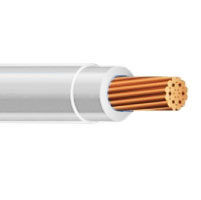

Not exact numbers, and different type of batteries and cells can do better or worse. You lose about 5% during charge, and can use 70-80% of the charge. you lose about 25% when you are charging, and can use about 35-40% of the charge without damaging the expected cycle life. With no mining rig, and no airconditioning (as it is cool due the long rain), the 1250-2500w is enough to charge the batteries and have 24/7 power.įor lead acid. Indeed, calculate 10-20% of solar production, and you are safe. They don't tell you this in the brochure when you go live off grid!! In 2 or 3 years when the rig dies, we still are happy with the extra energy, for the next +20 years to come. Yes, the rig makes that I need to make oversized system now. I do have a mining rig (crypto currency, bitcoin stuff) I like to run, that uses 1000w 24/7, but makes 90-100 usd per month. (but normal for off grid living)Ģkw deep well pump to the 1500L tower from there strong pump for garden water pressure (sprinklers), and pump to filter in the reverse osmosis system, from there 200L tank for the household, that have it's own pump also.) The rest is normal like (inverter type) refrigerator, chargers, (led) lights, and (not so normal) loads of water pumps. Thailand is hot, we have 5x (inverter type) airconditioning using max 850w each. Roughly 12.500 watt on solar panels, and 37.5kwh lifepo4 to live like you have grid connection.

and adding 280Ah, its on its way and expect to receive next week.

My first 16x 200Ah lead acid died soon due defective MPPT inverter, now we have lifepo4. Of grid makes you realise how easy grid is. Then you realise stuff that eats a lot of power needs total different approach. That was till we installed the 2kw pump my wife bought a few years earlier. This took a week to recover, to fully charge the batteries again and still use it for basics. Sister in law bought refrigerator and connected it. No refrigerator, we bought ice cubes every day for the coolbox. If you stick to the basics, light, phones, laptop, ventilator. We started with 2 x 300 mono panels and 2x 110Ah lead-acid. I still need to decide (link to other thread). the rainy / cloudy days made me see I'm wrong.Īdded 9 more on the side of the house, different angle. My first setup i thought 18 panels should be more then enough. Plan on doubling those numbers if the weather's still as bad as I remember it. I've since expanded it twice now with an additional 1000W for each addition because I found Renogy's kit to not meet my needs. BTW, I went with the largest "cabin kit" that Renogy offered. In your location I think that 2000W of panels would keep a 24V system happy (or at least not collapsing). Will there be a well pump? I'd go with 48V if the answer is yes. 5kwh will give you a meager 20/21 century lifestyle (frig, lights, TV, wifi) if you are conservative. I'd say that for a whole-house system you'd want to go with either a 24 or 48V system that could produce at least 5kwh of power in the winter months. Solar will have to be ridiculously oversized in summer to compensate for the wet dreary winters.
ELECTRICAL LABOR UNITS @12 THHN FULL
What plans do you have for the 9 months of the year when it's cloudy and drizzling? Yes, you'll be at full output in July, August, and September, but what about the rest of the year when output drops to 10%. Well, I'm a WSU graduate, and spent a bit of time in Forks. Ummm, why are 11 posts in this thread devoted to just fuses and wiring? Hope that provides some insight into my madness.

So I want usable solar power immediately, then grid-tied power in the interim, and then over time I want to grow the solar set up so that I have little or no reliance on grid power. So we're going to have Jefferson PUD run power to the property.which also isn't cheap.but that will take time (PUD is estimating 90ish days) with permitting and scheduling and whatnot. We were originally going to go fully solar from the start, but then I had several companies size/price it out and to offset the overcast weather in the nonsummer months, we're looking at a system that costs north of $30k. The plan is to use solar (I'm thinking of starting with ~1kW) topped off as needed with a pair of 3500w generators to charge our laptops, phones, power tools, and generally a rudimentary glamping lifestyle while working IT jobs while we build out the house during the summer months. There is no power to the property currently. We'll be living on Dabob Bay near the community of Coyle (address is Quilcene).


 0 kommentar(er)
0 kommentar(er)
